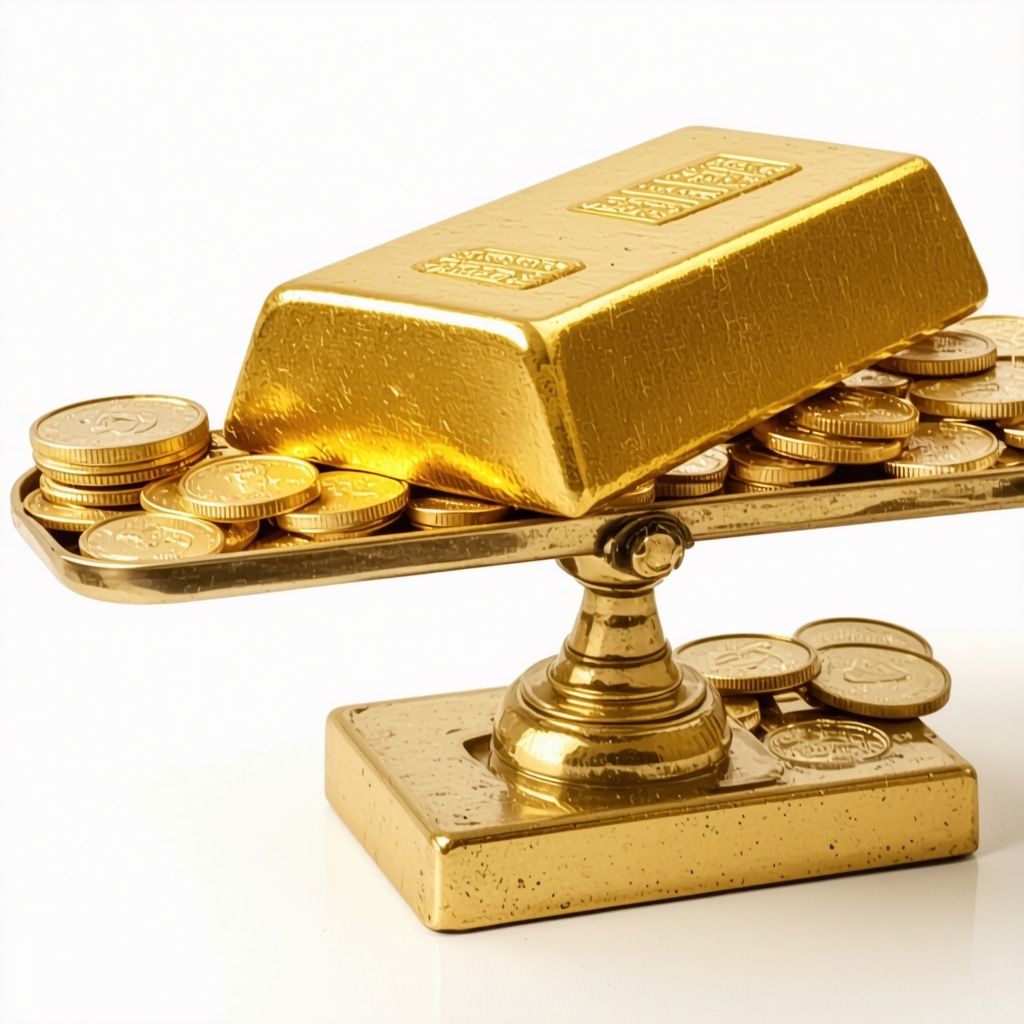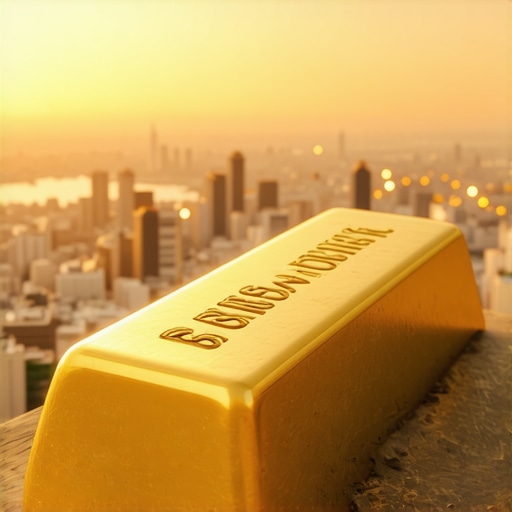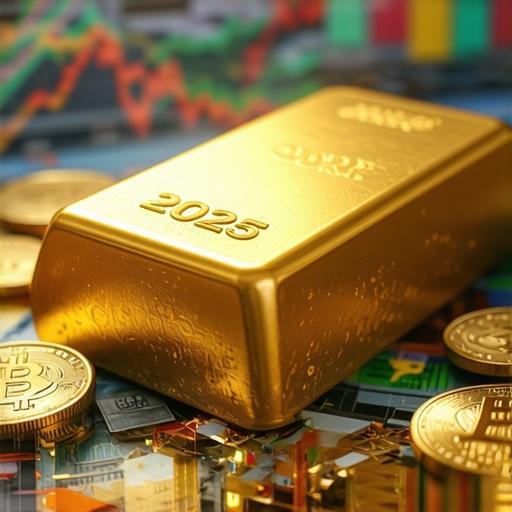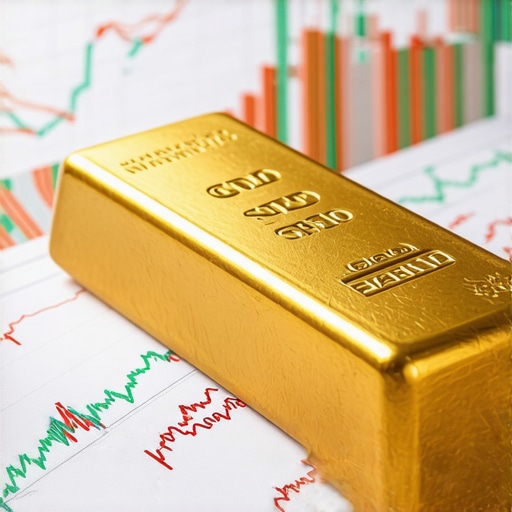How I First Realized the Power of Gold Supply and Demand
Looking back, I remember the moment I truly grasped the importance of gold supply and demand in investing. It was during a market downturn when many were panicking about stocks, but I found myself intrigued by gold’s resilience. What fascinated me was how shifts in gold’s availability and global appetite directly impacted its price movements, offering clues for smarter investment decisions. This personal journey led me to dive deeper into the mechanics behind gold supply and demand, shaping the way I approach precious metal investing today.
Why Gold Supply Isn’t Just About Mining Output
Initially, I thought gold supply was straightforward—just the amount mined each year. But experience taught me it’s much more complex. The available supply includes recycled gold, central bank reserves, and above-ground stocks. For instance, when central banks decide to increase their gold purchases, it tightens supply in the market and can push prices higher. I found an insightful resource from the World Gold Council detailing how these dynamics interplay, which helped me refine my investment strategy (World Gold Council – Gold Demand Trends).
How Does Global Demand Influence Gold Prices?
From my observations, gold demand comes from diverse sectors: jewelry, technology, investment, and central banks. When demand surges, especially from emerging markets or during geopolitical uncertainty, prices often respond upward. I remember during a recent economic slowdown, increased investor interest in gold ETFs and physical gold bars signaled heightened demand, reflecting a flight to safety. This surge in demand, paired with constrained supply, created opportunities for investors who understood these market signals.
Lessons I’ve Learned About Smarter Gold Investing
Understanding these supply and demand factors has transformed how I build my gold portfolio. I now focus not just on price trends but on underlying market forces like central bank purchases, mining output changes, and consumer demand shifts. For anyone starting out, I highly recommend exploring comprehensive guides that unpack these concepts, such as this detailed analysis of gold supply and demand. It’s helped me avoid common pitfalls and make more confident investment choices.
If you’ve had experiences with gold investing or questions about how supply and demand affect your decisions, I’d love to hear your thoughts in the comments. Sharing insights helps us all become smarter investors.
Central Bank Gold Purchases: The Invisible Hand Shaping Markets
Central banks are often the silent giants influencing gold supply and demand dynamics. Their decisions to buy or sell gold reserves can drastically reshape market conditions. For example, when multiple central banks coordinate to increase their gold holdings, this reduces the available market supply, often triggering price rallies. Conversely, divestments or gold lending by these institutions can flood the market and depress prices temporarily. My experience taught me to monitor central bank reports closely, as they provide early signals of potential price movements. This aligns with insights from the World Gold Council, which tracks these impactful transactions regularly.
The Role of Recycling and Secondary Supply in Market Balance
Another crucial but sometimes overlooked factor in gold supply is recycling. The gold that enters the market through scrap and recycling can significantly augment mined supply, especially during periods of high prices when holders are incentivized to sell. However, recycling supply is also price-sensitive; if prices fall, less gold tends to be recycled, tightening supply. Understanding these nuances has been key for me to anticipate supply-side shifts beyond mining output alone. This knowledge helped me better interpret market signals and avoid common traps related to apparent oversupply or shortages.
How Can Investors Leverage Gold Supply and Demand Analytics for Tactical Advantage?
From an expert perspective, tapping into real-time data on gold supply and demand provides a tactical edge. By analyzing trends such as central bank buying patterns, jewelry demand in emerging economies, and shifts in recycling volumes, investors can anticipate price inflection points before they become evident in mainstream markets. I recommend integrating resources like this comprehensive guide into your research routine. It’s not merely about tracking prices but understanding the underlying forces that move them, which is essential for building a resilient gold investment strategy.
Moreover, considering the interplay between physical gold investments and financial products like gold ETFs can diversify exposure to supply-demand dynamics. For instance, during times of physical shortages, ETF premiums may spike, offering arbitrage opportunities for savvy traders.
Global Economic Indicators and Their Ripple Effects on Gold Demand
It’s also vital to recognize how macroeconomic factors drive gold demand. Inflation rates, currency fluctuations, geopolitical tensions, and interest rate policies all create ripple effects that alter investor appetite for gold. In periods of economic uncertainty or currency devaluation, gold often becomes a preferred store of value, increasing demand. Conversely, rising real interest rates might dampen gold’s allure as a non-yielding asset. Keeping an eye on these indicators allows me to contextualize supply-demand data within broader economic narratives, enhancing decision-making.
As you continue to refine your gold investment approach, I encourage you to explore expert gold price forecasts that factor in these economic drivers for 2025 and beyond.
If these insights resonate with your investing experience or spark new questions, please share your perspectives in the comments below. Engaging in such discussions sharpens our collective understanding and empowers smarter investment choices.
A Personal Reflection on the Emotional Undercurrents of Gold Demand
It’s fascinating how gold isn’t just a metal but a mirror reflecting human emotions on a global scale. From my experience, the demand for gold often spikes not merely due to cold economic calculations but because of collective sentiments—fear, hope, and a desire for security. I recall during periods of geopolitical unrest, it felt like millions were simultaneously seeking the same safe haven, driving demand beyond traditional factors. This emotional overlay adds a layer of complexity that pure data sometimes misses, reminding me to balance quantitative analysis with qualitative awareness when investing.
How Do Shifts in Consumer Behavior Impact Gold Demand Beyond Numbers?
This question intrigued me deeply after noticing subtle shifts in consumer preferences, especially in emerging markets. For instance, younger generations in countries like India and China are gradually moving from traditional gold jewelry purchases to digital gold and ETFs. This transition modifies demand patterns not just in volume but in form and liquidity. It prompted me to explore resources like the comprehensive analysis on gold demand trends, which offers invaluable insights on how cultural and technological changes ripple through the gold market.
Understanding these nuances helped me pivot part of my portfolio toward gold ETFs, aligning with evolving demand trends while maintaining exposure to physical gold. If you’re curious about blending different gold investment forms, this guide on gold ETF strategies offers practical advice on building a balanced approach.
When Mining Supply Meets Environmental and Political Realities
Mining, often thought of as a straightforward supply source, is entangled with environmental policies, geopolitical risks, and labor challenges. My journey taught me that disruptions in mining supply can arise not only from technical issues but from sudden regulatory changes or social unrest in mining regions. For example, a temporary shutdown of a major mine due to environmental protests can tighten supply unexpectedly, influencing prices. This unpredictability motivates me to keep tabs on mining sector news and to consider gold stocks cautiously, supplementing physical and ETF holdings.
For those interested in diving deeper, I found the best gold stocks to watch in 2025 especially enlightening, blending supply-side factors with market valuations.
Exploring the Intersection of Technology and Gold Market Dynamics
Technology’s impact on gold demand and supply is a fascinating frontier. Beyond recycling innovations that improve secondary supply efficiency, emerging blockchain platforms for gold trading and tokenization are reshaping accessibility and liquidity. I’ve personally experimented with tokenized gold assets, appreciating how they offer instant exposure without the logistical challenges of physical gold. However, this also introduces new risks and considerations, such as regulatory uncertainty and platform security.
Integrating traditional gold investments with innovative digital options requires a nuanced understanding of both markets. For a thorough exploration, I recommend reading about choosing the right type of gold investment in 2025, which covers both physical and digital forms.
What Should Investors Watch for When Balancing Physical Gold with Digital Alternatives?
From my experience, the key is understanding liquidity needs and risk tolerance. Physical gold offers security and tangibility, while digital gold products provide convenience and often better liquidity but can carry counterparty risks. Watching market trends, regulatory developments, and technological advancements helps me adjust my allocations dynamically. Engaging with community insights and expert analyses, like those shared on smart gold investment approaches, enriches this balancing act.
If you’ve explored both physical and digital gold investments, I invite you to share your experiences or questions below. I believe our collective dialogue sharpens our strategies and deepens our understanding of this evolving market.
When Geopolitical Shifts Redefine Gold’s Market Dynamics
Throughout my investing journey, I’ve witnessed how geopolitical events can swiftly recalibrate gold’s supply-demand equilibrium. Unlike conventional commodities, gold reacts not only to tangible factors like mining output but also to the intangible ripples of global political tensions. For example, during escalating conflicts or trade disputes, I’ve seen central banks and private investors alike accelerate gold accumulation, anticipating currency devaluation or inflation spikes. This phenomenon is more than market noise; it’s a profound reflection of collective risk perception, reminding me that geopolitical intelligence is as vital as economic data for anticipating gold price trajectories.
Such geopolitical-driven demand surges often coincide with supply constraints, especially when mining operations face disruptions due to sanctions or instability in resource-rich regions. This confluence creates fertile ground for price volatility but also for strategic opportunity. I regularly consult detailed geopolitical risk assessments alongside market analyses, which complements resources like the gold market analysis for 2025 that highlights these intersecting forces.
How Can Sophisticated Investors Incorporate Geo-Economic Signals into Gold Portfolio Strategies?
Addressing this advanced question, I believe balancing quantitative models with qualitative geopolitical insights is indispensable. Investors should integrate real-time news analytics, central bank disclosures, and trade policy developments into their decision frameworks. For instance, I often adjust my portfolio allocations ahead of anticipated geopolitical events, favoring gold ETFs for liquidity or physical holdings for security depending on risk exposure. Additionally, diversifying across mining stocks sensitive to regional risks can provide asymmetric gains. Resources like smart gold investment approaches offer nuanced strategies aligning with this philosophy.
Decoding the Digital Disruption: Tokenized Gold and Blockchain’s Growing Influence
Technology has ushered in a paradigm shift for gold investing, with blockchain-enabled tokenization redefining access and liquidity. My experiments with tokenized gold have revealed both promising advantages and cautionary complexities. Instantaneous trading, fractional ownership, and transparent provenance are compelling benefits that can democratize gold investment. However, challenges like regulatory ambiguity, custody risks, and platform dependencies demand a sophisticated risk management approach.
This duality underscores the importance of blending traditional and innovative gold holdings. By maintaining a core of physical gold complemented by selective tokenized assets, I achieve both stability and agility. For investors eager to explore this frontier, the detailed insights in choosing the right type of gold investment in 2025 provide invaluable guidance on navigating digital and physical investment vehicles.
Embracing Market Nuances: The Symbiosis of Supply Realities and Investor Psychology
One of the most profound realizations in my journey is that gold’s market is as much a psychological arena as it is a physical one. Supply constraints, whether from mining disruptions or recycling downturns, often trigger amplified reactions fueled by investor sentiment. The behavioral economics behind gold demand—fear-driven buying, herd mentality, or contrarian positioning—adds layers of complexity that pure data analysis cannot fully capture.
Integrating behavioral insights with supply-demand analytics has refined how I time entries and exits. For example, during periods of exuberant buying, I remain cautious about overextension, while in times of market pessimism, I look for undervalued entry points supported by fundamental supply tightening. This balanced approach is echoed in advanced investment frameworks such as those outlined in advanced gold trading techniques, which marry technical, fundamental, and psychological perspectives.
If you find these explorations resonate with your own investing experiences or if you’re navigating the evolving gold market, I encourage you to share your stories or questions below. Engaging in this sophisticated dialogue enriches our collective expertise and empowers us all to make more informed, nuanced investment decisions.
Things I Wish I Knew Earlier (or You Might Find Surprising)
The Invisible Influence of Central Banks
When I first started, I underestimated just how much central bank gold purchases could sway the market. Their quiet accumulation or selling isn’t always headline news, but it can create significant supply shifts that ripple through prices. Monitoring these moves early gave me an edge in anticipating market turns.
Recycling Isn’t Just a Footnote
I used to think mining output was the sole driver of gold supply. Over time, I realized recycling plays a dynamic role — especially when prices climb, incentivizing holders to sell scrap gold back into the market. This secondary supply often surprises investors who overlook its sensitivity to price changes.
Emotions Drive Demand Beyond Economics
Gold’s allure isn’t purely rational. I’ve seen how collective sentiments like fear during geopolitical tensions or hope in uncertain economies drive sudden demand surges. Recognizing this emotional undercurrent helps me temper reactions and choose my moments more thoughtfully.
Digital Gold is Changing the Game
The rise of tokenized gold and blockchain platforms caught me off guard at first. These innovations offer liquidity and accessibility but come with new risks. Balancing physical gold with these digital alternatives requires ongoing learning and flexibility.
Mining Supply Can Be Fragile
Environmental policies, labor issues, and geopolitical unrest can disrupt mining operations unexpectedly. This fragility means supply can tighten swiftly, impacting prices. Keeping an eye on mining news has become a vital part of my investment routine.
Consumer Behavior Evolves with Culture and Tech
Younger generations in key markets are shifting from traditional jewelry to digital gold and ETFs. This changes demand patterns in subtle but important ways, influencing liquidity and price dynamics. Staying attuned to these trends helped me adapt my portfolio accordingly.
Resources I’ve Come to Trust Over Time
World Gold Council – Gold Demand Trends: Their comprehensive data and reports have been my go-to for understanding both supply and demand nuances. Their insights on central bank activity and market trends are invaluable.
BuyingGoldNow.com – Analyzing Gold Supply and Demand for Smarter Investment Moves: This guide helped me connect the dots between raw data and actionable strategies. I often recommend it to friends starting out.
BuyingGoldNow.com – Types of Gold Investments: Choosing the Right Option in 2025: This resource opened my eyes to the pros and cons of physical versus digital gold, helping me balance my holdings wisely.
BuyingGoldNow.com – Smart Gold vs Stocks: Investment Approaches for 2025: It offers a thoughtful comparison that helped me decide how much gold to hold alongside my stock portfolio.
BuyingGoldNow.com – Advanced Gold Trading Techniques for Smart Market Moves: For those interested in deeper strategies, this guide blends technical, fundamental, and psychological perspectives beautifully.
Parting Thoughts from My Perspective
Gold supply and demand are far more than just numbers on a chart; they reflect an intricate dance of physical realities, macroeconomic forces, and human emotions. My journey has taught me that truly understanding these drivers leads to smarter, more confident investment decisions. Whether it’s watching central bank moves, adapting to evolving consumer behaviors, or balancing physical gold with innovative digital options, the key is staying curious and flexible.
If this exploration of gold supply and demand resonated with you, I’d love to hear your thoughts or experiences. Feel free to share your insights in the comments below — together, we can deepen our understanding and navigate this fascinating market more effectively.










